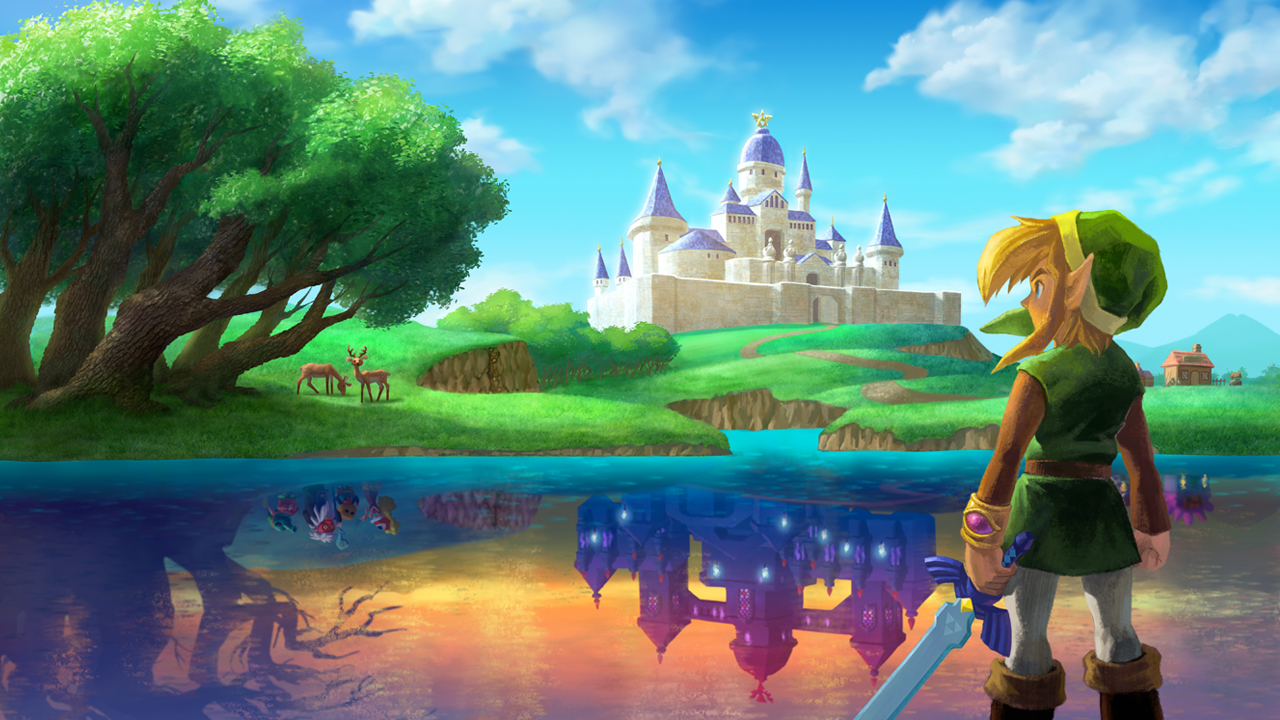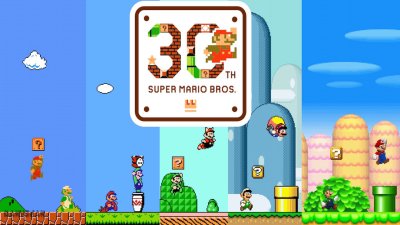There’s much to be said about tradition and reverence towards the past. As a company that thrives the most when they embrace the past and drag it into new horizons, Nintendo has both its fans and detractors. The fans? They love to play their games, despite the fact that “revolution” might be a word better left for a console codename than a modus operandi. The detractors? They see repetition as stagnation, games like Donkey Kong Country: Tropical Freeze as no more than a DLC level pack, and not a refinement of already-solid expert gameplay mechanics.
The Legend of Zelda: A Link Between Worlds is a game that tries to appease both groups, but does it succeed in showing the best of both concepts, or is it duality without depth?
The title arrives with much fanfare; beyond the fact it’s a new Zelda title (a franchise that’s had more perfect scores than most), it’s something of a spiritual sequel to one of the uncontested best games of all time, A Link To The Past - even using the same overworld map.
While the Japanese title makes it more clear as a numerical sequel, Hyrule historians will know that it takes place generations after the original title, and that Link’s Awakening is the next tale for that super(Nintendo)hero in the series’ convoluted chronology, which spans multiple divergent timelines. With much of the map, and the general gameplay, evoking the SNES classic, it’s the changes to the mechanics which result in the game feeling surprisingly fresh.
The traditional Zelda formula requires the player, always Link, to go to one dungeon to the next, gaining items in the former that allow him access to the latter. For parts of this game, this aspect rings true; you have to tackle three dungeons before you gain an ability that lets you access next batch, one dungeon’s defeat adds another item to your available repertoire, and all the dungeons must be defeated before taking on the final boss.
A Link Between Worlds adds a shopkeeper, Ravio, who rents out the items to our hero. If you have enough rupees, you can rent (or even purchase, permanently adding items to your account and preventing them from disappearing when dying) items that’ll allow you to enter the dungeons, face off against the obstacles that properly use both your cranium and the effects of the weapon, and generally just provide a better arsenal when exploring the world and its secrets. With enough rupees, you can theoretically acquire most of the items and explore the world fully without fighting (one item is tantalizingly held out of reach until you save a certain Sage, however).
The world is a fun one to explore, making clear callbacks to the SNES classic while venturing into new territory. It’s been centuries and decades, in game lore and in our world, since A Link to the Past, so elements have developed and been redesigned in that time. Link keeps his brown hair from that era, despite many of his successors and predecessors released since then being blonde or even cel-shaded; while he’s polygonal (and notably angled, to help recreate the classic’s overhead view), the game is stylized to fit the aesthetic of the original.
Most of the attacks and weaponry in the game follow a clear lineage from the franchise. There’s the Master Sword (with its spin and laser attacks), hookshot (that still paralyzes), boomerang (that you’ll find yourself rarely, if ever, using), bombs (thankfully, taking quantity from a renewable magic bar, and not a disposable item), fire and ice rods (both effective in making your way around and destroying enemies), and more. The game’s notable addition/gimmick is Link’s ability to flatten out and run amongst walls as graffiti, in a move that’s visually and conceptually reminiscent of Sideway: New York.
Thankfully, it works for the most part. You can’t sidle on walls if there’s a boulder in front of it, and rupees look a bit slanted when you slide past them, but the mechanic is less distracting than the one from Spirit Tracks. This is where the Zelda franchise shines, adding new items and concepts in each new installment, but keeping much of the classic gameplay intact.
The progression mechanic being changed up has one notable fault. As seven of the dungeons can be accessed at any time, there’s no gradual increase in difficulty. All of the dungeons feature, conceptually, the same difficulty; they all fall somewhere in the “average” difficulty level. Only the initial three dungeons are “easy” and the final dungeon “hard,” but nothing is completely impassable to educated gamers.
In fact, if you do find yourself having difficulties with a dungeon, take a breather, exit, and try another one. You’ll find yourself juggling a few dungeons if you really can’t master one, but you’ll eventually find the key (or keys) to victory.
The plot is rather light; only the opening and ending really feature any development. This isn’t too uncommon for a Zelda game of this style, but there could always be more action and progression. It seems as if, once your quest starts, the world goes about its business until you’re ready to finish it up. It’s serviceable, but nothing special. The soundtrack is much of the same; there’s no track that’ll stand out of your Zelda collection or demand to be in a new Symphony of the Goddesses, but it’s effective and charming.
There’s a twist revealed near the end of the game, and it’s just a massive tease of the possibilities that could come from it if further explored. Largely without spoilers, a new version of a character is introduced that is set up perfectly for what could be a Master Quest - a side-story or hard mode that could tell it’s own tale and expound on a world and adventure we’ve only gained a hint of. It’s not impossible to imagine Nintendo releasing such an adventure as a standalone expansion in the eShop - given their interest in paid DLC in recent years - but it’s a faint dream at best.
In the current mindset of Nintendo, A Link Between Worlds almost stands out as an oddity in the Zelda franchise. With announcements that the next, major-budget Wii U iteration of the franchise will feature open-world gameplay, and features a lovely artstyle that seem like a halfway-house between Wind Waker and Skyward Sword, A Link Between Worlds’ attempt to provide a more modern update to A Link To The Past’s 16-bit stylings feels a little off, despite seemingly being the first step towards a true open-world Zelda title.
But despite being more open-ended and non-linear than perhaps any Zelda title before it, there’s still an optimum route through the game, and there are still certain areas that are blocked off until you’ve reached prescribed parts of the story. While this doesn’t detract from the fun, it does take some getting used to. A Link Between Worlds is not nearly as open-world as many would like, and the result is that its attempts to present freedom can feel illusory at times; this isn’t a Grand Theft Auto or Saints Row game that has a theoretically-fully open world to fully immerse yourself in (with the requisite “mission trees” to whittle your way down), and with the limitations of the gameplay, you won’t lose yourself to hours of mindless self-indulgences.
There’re also side games and collectibles that you’ll probably never bother with, but you won’t be trying to exploit the physics of the world and try to see how much you can break the game, half the fun of those other open world experiences. You’re given the option to explore the world much like any other Zelda game, but you’ll find that the wall-walking ability is sometimes more of an annoyance than an adventure: why can’t you jump while on a wall, or just outright climb? The fact that you’re limited to left and right movement seems arbitrary by nature, despite the graffiti-esque design of Link being an interesting look.
Despite all this though, A Link Between Worlds is an essential purchase for Zelda fans, being one of the best handheld adventures for the franchise. It’s hardly going to convert the legions of people who bombard message boards and forums complaining about “yet another” Zelda game, erroneously stating that every new entry is the same; but for players who have invested enough time with the series, the mechanical and structural tweaks and additions actually result in a title that feels far more progressive than any other Zelda game in recent years, despite its retro stylings.
A Link Between Worlds is still very much the Zelda we all know and love then, but it’s Zelda looking as much towards the future as it is to the past, and is a must-have for any gamer with a 3DS.



